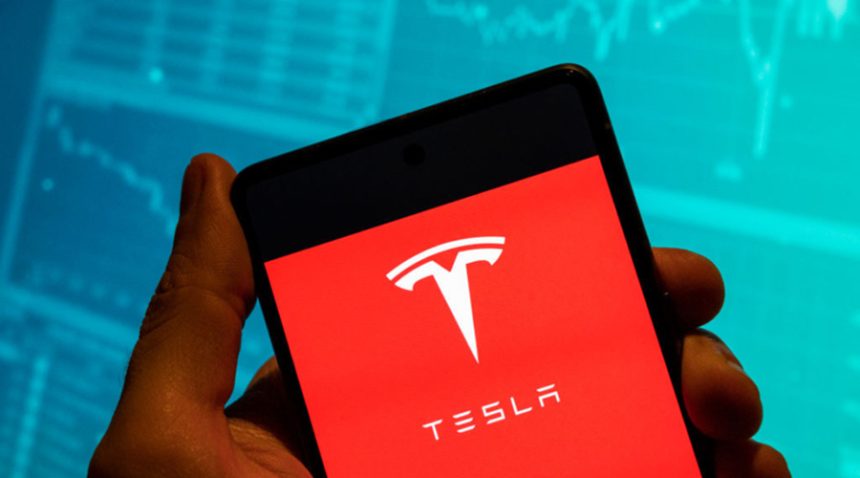Explore the latest updates on Tesla, its stock performance, and the impact of Elon Musk’s leadership
Tesla Inc. (TSLA) has found itself under significant pressure, with its stock falling for eight consecutive weeks—a record-breaking losing streak for the electric vehicle (EV) giant. As of March 21, 2025, Tesla’s stock closed at $236.26, recovering slightly with a marginal gain of 0.14% from the previous day. The stock has been trading in a volatile range, with intraday highs of $242.30 and lows of $229.28, on an unusually high trading volume of nearly 99 million shares.
The prolonged decline has raised pressing questions about whether the market is fairly pricing in Tesla’s current risks or simply overreacting to short-term sentiment shifts.
The Unprecedented Decline
Over the last two months, Tesla has shed approximately 42% of its market value. This sharp and continuous downtrend has resulted in the erosion of nearly $700 billion in market capitalization. The magnitude and duration of this decline are unusual for a company that has traditionally enjoyed investor enthusiasm and premium valuations. The downturn also represents the steepest and lengthiest drawdown in the company’s publicly traded history.
The negative streak has had broader implications, including a substantial hit to the wealth of CEO Elon Musk, whose fortune is closely tied to Tesla stock performance.
Factors Driving the Selloff
1. Political Controversy Surrounding Elon Musk
One of the major catalysts behind Tesla’s underperformance has been Elon Musk’s increasingly visible involvement in U.S. politics. His appointment as the head of the Department of Government Efficiency (DOGE) under President Donald Trump has drawn both support and criticism. While some see this as an extension of Musk’s efforts to reform institutions, others argue that it politicizes Tesla’s brand and risks alienating a large portion of its consumer base.
Musk’s vocal political views, controversial social media posts, and policy endorsements have triggered backlash, including nationwide protests and incidents of vandalism at Tesla showrooms. For a company that thrives on consumer loyalty and brand equity, this erosion of goodwill is significant.
2. Weakening Demand and Rising Competition
Tesla’s global sales figures have begun to decline, especially in key markets such as Europe and China. The competitive landscape has intensified with local and international automakers ramping up their EV offerings. Chinese manufacturers in particular are aggressively pricing their models, gaining ground in a market where Tesla once dominated.
In Europe, new regulatory hurdles and shifting consumer preferences have dented delivery volumes. In the United States, affordability concerns and rising interest rates have weighed on demand for high-end electric vehicles. These issues have prompted analysts to cut delivery estimates and revise revenue forecasts downward.
3. Brand Image and Consumer Perception
Public sentiment around Tesla has shifted noticeably in recent months. Once hailed as a symbol of innovation and sustainability, the company is now increasingly seen through a political and ideological lens. Movements like the “Tesla Takedown” have emerged, encouraging consumers to boycott the brand and target its dominance in the EV sector.
This change in perception not only affects consumer buying behavior but also impacts investor sentiment. For a brand so closely tied to its charismatic CEO, the controversy surrounding Musk has proven to be a double-edged sword.
4. Analyst Downgrades and Mixed Signals
Analyst coverage has grown more cautious. Major financial institutions have either lowered price targets or shifted to a “hold” stance on the stock. One high-profile downgrade came with a reduction in the 12-month price target from $515 to $430, citing deteriorating geopolitical conditions, concerns about brand damage, and strategic missteps.
Some analysts, however, maintain a long-term bullish stance, pointing to Tesla’s innovation pipeline in areas like artificial intelligence, autonomous driving, and battery technology. The divergence in opinion reflects the complexity of Tesla’s investment narrative.
Market and Institutional Reactions
The scale of Tesla’s decline has not gone unnoticed. The U.S. Department of Commerce, in an unusual move, publicly urged investors to support Tesla, describing it as vital to the nation’s innovation infrastructure. The endorsement from Commerce Secretary Howard Lutnick was widely viewed as controversial, with some historians calling it an alarming precedent for government influence in capital markets.
Meanwhile, short sellers have capitalized on the downtrend, racking up over $16 billion in profits from Tesla’s declining valuation. The stock has become one of the most shorted names on Wall Street in 2025, driven by concerns about earnings growth, management focus, and competitive risks.
Analyst Perspectives: A Divided Street
Despite the current bearish outlook from some corners, several analysts continue to express confidence in Tesla’s long-term fundamentals.
Dan Ives of Wedbush Securities, a well-known Tesla bull, believes the company is in a critical moment of self-reflection. He has emphasized the need for management to refocus on product innovation, execute flawlessly on new vehicle launches, and address investor concerns directly. According to Ives, the fundamentals of Tesla’s core business remain strong, but leadership distractions have undermined market confidence.
Andres Sheppard of Cantor Fitzgerald recently upgraded Tesla’s rating, stating that the current stock price presents an attractive entry point for long-term investors. He cited ongoing developments in autonomous driving, energy storage, and potential licensing of Tesla’s full self-driving (FSD) software as growth levers that are being undervalued by the market.
Technical Trends and Support Levels
Technical analysts are closely watching Tesla’s price action for signs of a potential bottom. The stock appears to be trading within a descending broadening pattern—a structure that typically precedes a breakout, but can also signal further downside if support levels are broken.
Current support is estimated around $190, a level where the stock may find buyer interest if selling pressure continues. Resistance is now capped near $265, with stronger resistance zones in the $340–$360 range. Momentum indicators remain weak, but a shift in volume dynamics or positive news could spark a reversal.
Outlook: Correction or Structural Shift?
Tesla’s eight-week decline has triggered widespread debate among investors. On one hand, the decline could represent a necessary correction following years of elevated valuations. On the other, it may indicate deeper structural issues tied to leadership, strategy, and public trust.
The company continues to maintain a strong balance sheet, healthy gross margins, and a global manufacturing footprint. The innovation engine—driven by investments in AI, robotics, and clean energy—remains intact. However, near-term headwinds including political entanglements, brand backlash, and intensified competition must be addressed proactively.
Institutional investors are watching closely for signals of strategic recalibration. Corporate governance, public messaging, and leadership transparency will likely play key roles in restoring market confidence.






